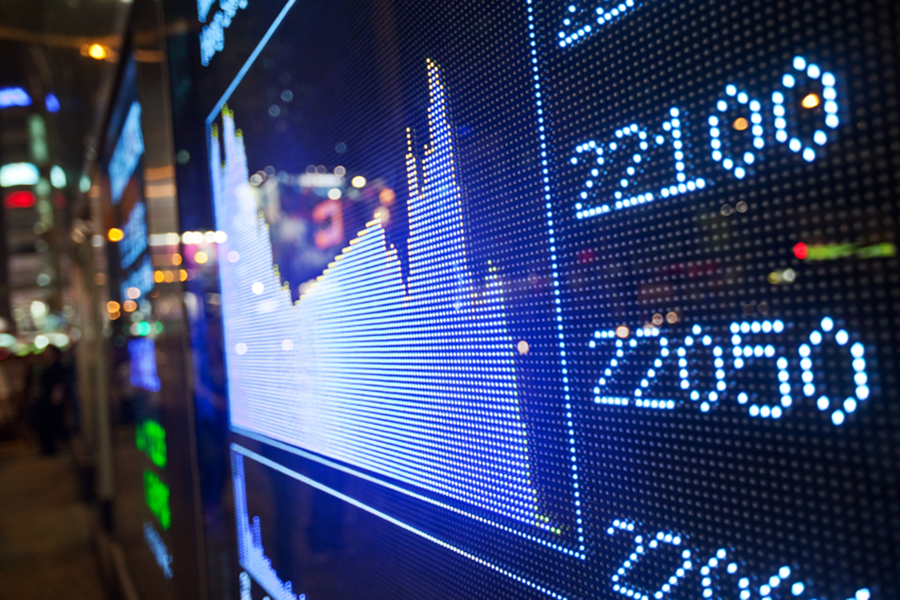Commodities Up Sharply in Q1. Can Trend Continue?

Commodities have rebounded sharply from the low levels seen in February, but the gains have been selective, with oil barely above December 31 levels, while iron ore prices have catapulted higher. The Thomson Reuters Jefferies Core Commodity Index last traded at 170.6920 Thursday, on the low side of a 170.0737 to 172.2177 range, with clear signs of month-end and quarter-end profit-taking.
The index peaked at 178.6795 on March 18, which was the highest level since Dec. 9, when the index topped out at 180.0484. This was a far cry from the four-teen year lows seen in January and February. The TRJCCI (CRY) posted what may double-bottom lows at 154.8462, on Jan. 20 and 154.8913, on Feb. 11. From its Feb. 11 low to the March 18 high, CRY was up 15.4%, versus the 60.8% rally seen in West Texas Intermediate from its trough of $26.05, seen Feb 11, to peak of $41.90, seen March 22. In both cases, profit-taking after a sizable run-up was inevitable, traders said.
There was great debate about whether commodity prices have peaked for now or there is more room to run to the topside, they said.Solid China purchasing manager data, if coupled by upbeat readings in the U.S. for March non-farm payrolls and ISM manufacturing also Friday, would go a long way to support bullish commodity sentiment, they said.
In a recent note, Capital Economic's chief global economist Julian Jessop said that despite the correction lower in oil prices, the outlook was "undoubtedly brightening." He also saw the landscape improving for industrial metals. "As we had anticipated, fears that a 'hard landing' in China would precipitate a large devaluation of the renminbi have faded," he said. Nevertheless for metals to see a sustained push higher, "prices will still need evidence of meaningful supply cuts too, which seems a distant prospect for iron ore in particular," Jessop said. "But, we remain comfortable with our end-16 and end-17 forecasts for copper of $5,500 and $6,000 per tonne, respectively," he said. (Benchmark copper CMCU3 on the London Metal Exchange closed at 4,847 per ton).
March was "the best month for commodities in 10 years," said Jodie Gunzberg, global head of commodities and real assets at S&P Dow Jones Indices.March 2016 was the "first March all 14 commodities inside energy (6) and agriculture (8) sectors were positive," an event last seen in July 2012, she noted. In addition, "all commodities inside the agriculture sector have never been positive together in any historical March," Gunzberg said. March 2016 historically has been a "big month for the energy sector and some of the constituents inside it, in addition to coffee and sugar," she said. Bad news for coffee drinkers, coffee as a commodity was up 10.4% in March, "the best March since March 2002 and the second best March since 1981, and the best month since July 2014," Gunzberg said.
Much of the market's focus has been on oil prices, which have risen sharply since bottoming in February. West Texas Intermediate topped out at $41.90 and ICE Brent at $42.54 March 18. At current levels of $38.70 and $39.68 per barrel, both WTI and Brent remained above what is deemed the first larger area of support, the 38.2% Fibonacci retracements of rally from the 2016 lows, seen in February ($26.05 WTI) and January ($27.10 Brent), to the 2016 highs seen in March, at $35.85 and $36.64 respectively. Barring extremely disappointing global data, traders do not see oil prices falling too far ahead of the April 17 meeting of OPEC and non-OPEC members in Doha, Qatar.
For many weeks now, headlines have suggested that many, but not all attendees will agree to freeze production at January levels. Capital Economic's Jessop said CE was keeping its year-end 2016 forecasts for both WTI and Brent at $45 for now. "We do continue to expect prices to recover further, to $60, but not until 2017," he said.
As for gold, the precious metal has retreated from the highs posted earlier in the month, but remained underpinned. Spot gold was trading at $1,232.30 per ounce Thursday, in the middle of a $1,223.92 to $1,240.56 range. The precious metal topped out at $1,284.64 March 11, which was the highest level seen since Feb. 3, 2015, when gold saw a high near $1,285.23. Gold then saw a series of lower highs and lower lows, bottoming Monday at $1,208.38. The March 23 high near $1,249.51 is seen as initial resistance, with a break targeting the March 22 highs near $1,260.34. Tuesday's lows near $1,215.40 should act as initial support.
The Thomson Reuters GFMS Gold survey 2016, released earlier, noted that "after 3 consecutive years of annual price declines, gold has recorded a blistering start to 2016 and is the best-performing asset in what has been a turbulent beginning to the year." Still, TRGMFS maintained that rally in gold is unlikely to be sustained and that "once current market turbulence starts to ease, we are likely to see the price retreat again, particularly as physical demand in key Asian markets is already weak." TRGMFS saw scope for gold to dip below $1,200 in coming months, but eventually should "find support due to improving market fundamentals."
Vicki Schmelzer
MNI New York Bureau

